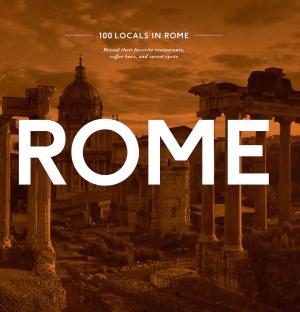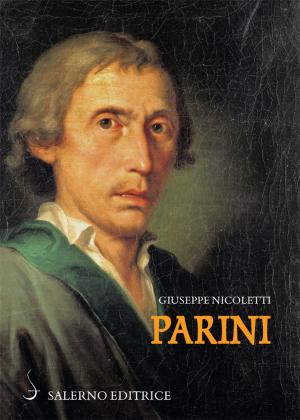Costumes and Textile Designs of India
Fiction & Literature, Literary Theory & Criticism, European, Italian| Author: | Parul Bhatnagar | ISBN: | 9781466000452 |
| Publisher: | Parul Bhatnagar | Publication: | January 8, 2012 |
| Imprint: | Smashwords Edition | Language: | English |
| Author: | Parul Bhatnagar |
| ISBN: | 9781466000452 |
| Publisher: | Parul Bhatnagar |
| Publication: | January 8, 2012 |
| Imprint: | Smashwords Edition |
| Language: | English |
Costumes and Textile Design History of India is derived from the rich Indian cultural heritage, which within recent years has received wide recognition throughout the world. Indian art has received some recognition from the hands of the scholars as well, but even this appreciation has been marred by hazy, nebulous, and mystic writings which strive to give it a philosophical background. However, this philosophical interpretation often denies to a universal audience an understanding of the core emotions and feelings that drove the creation of Indian art, cloaking it with an opaque coating of philosophical terms that hinder rather than help comprehension.
For a complete picture of Indian culture, therefore, it is necessary that its material aspects should be investigated. There is no dearth of material of Indian civilization to make such an investigation, checked and supplemented by contemporary sculptures, paintings and other archaeological finds. I may be permitted to strike a word of caution in this connection: literature should not be given undue prominence in this search, since an author, however gifted, cannot actually help us visualize the creative object in as vivid a manner as a painter or sculptor, who therefore becomes more reliable. Literary antiquarianism is good in its own way, but it should be avoided where more convincing proofs are at hand.
Fortunately for the student of design, India makes available a rich collection of beautiful textiles in cotton, silk and wool. These costumes are rich in technique, diversified in fashion, and full of colour and pattern. These promise a wealth of understanding not possible through the written word alone.
The beauty of an Indian costume lies in its richness of weaving, use of brilliant colours and skilful patterning. Much information visual evidence is found in stone, metal and wooden sculptures, frescoes and paintings on walls, palms, wood, cloth and paper. All these references give numerous examples of different designs on Costumes and Textiles and used at different times. The most important and vivid of these pictures comes from the Mughal miniature paintings from the sixteenth century.
For a connoisseur’s appreciation of the art, however, it becomes essential to understand the roots of our creativity, whose earliest available forms belong to the period between 642-320 B.C. For the early cultural history the Vedic literature including the Brahmanas, Upanishads and Sutras are important, and are succeeded by the Jatakas and Vinayapitaka in the later phase. These works provide us with a perspective on the role that art played even at that early an age, and a journey beginning at that time and leading to the present should create an understanding of Indian design that is fundamentally strong, while also being a journey limned with joy and wonder.
Costumes and Textile Design History of India is derived from the rich Indian cultural heritage, which within recent years has received wide recognition throughout the world. Indian art has received some recognition from the hands of the scholars as well, but even this appreciation has been marred by hazy, nebulous, and mystic writings which strive to give it a philosophical background. However, this philosophical interpretation often denies to a universal audience an understanding of the core emotions and feelings that drove the creation of Indian art, cloaking it with an opaque coating of philosophical terms that hinder rather than help comprehension.
For a complete picture of Indian culture, therefore, it is necessary that its material aspects should be investigated. There is no dearth of material of Indian civilization to make such an investigation, checked and supplemented by contemporary sculptures, paintings and other archaeological finds. I may be permitted to strike a word of caution in this connection: literature should not be given undue prominence in this search, since an author, however gifted, cannot actually help us visualize the creative object in as vivid a manner as a painter or sculptor, who therefore becomes more reliable. Literary antiquarianism is good in its own way, but it should be avoided where more convincing proofs are at hand.
Fortunately for the student of design, India makes available a rich collection of beautiful textiles in cotton, silk and wool. These costumes are rich in technique, diversified in fashion, and full of colour and pattern. These promise a wealth of understanding not possible through the written word alone.
The beauty of an Indian costume lies in its richness of weaving, use of brilliant colours and skilful patterning. Much information visual evidence is found in stone, metal and wooden sculptures, frescoes and paintings on walls, palms, wood, cloth and paper. All these references give numerous examples of different designs on Costumes and Textiles and used at different times. The most important and vivid of these pictures comes from the Mughal miniature paintings from the sixteenth century.
For a connoisseur’s appreciation of the art, however, it becomes essential to understand the roots of our creativity, whose earliest available forms belong to the period between 642-320 B.C. For the early cultural history the Vedic literature including the Brahmanas, Upanishads and Sutras are important, and are succeeded by the Jatakas and Vinayapitaka in the later phase. These works provide us with a perspective on the role that art played even at that early an age, and a journey beginning at that time and leading to the present should create an understanding of Indian design that is fundamentally strong, while also being a journey limned with joy and wonder.















